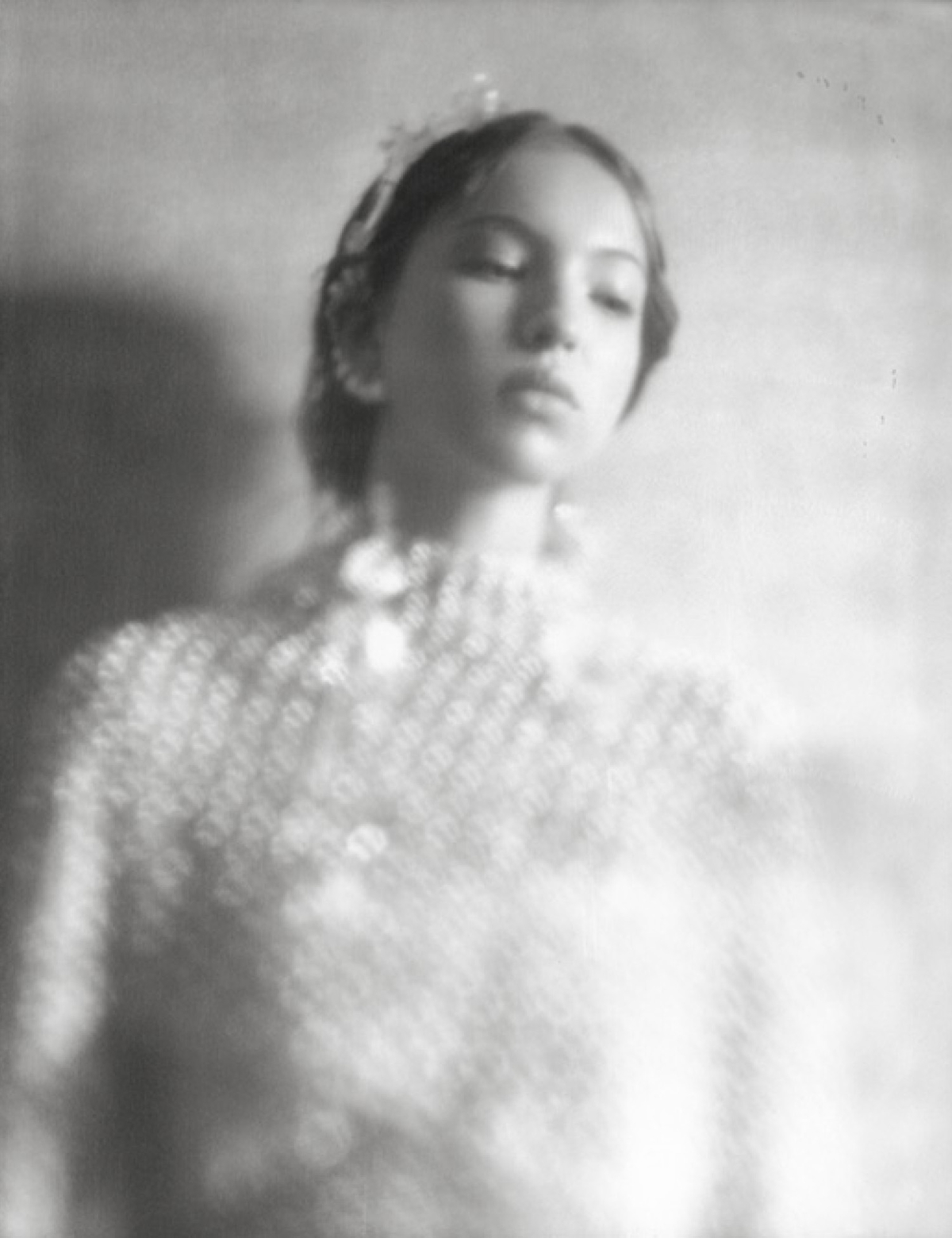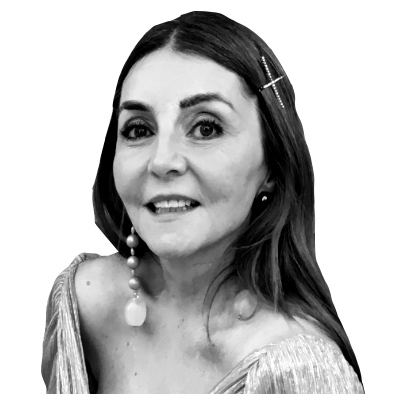Nikolai von Bismarck has thoroughly enjoyed himself at Disneyland.
“It was quite special, with all the fairy lights,” says the British-German photographer over the phone from Los Angeles, which he is visiting with his longtime girlfriend, the model Kate Moss. I picture him smiling as he describes how much they enjoyed the Peter Pan ride.
It’s an important moment for von Bismarck, who spent much of lockdown collaborating with Fendi artistic director Kim Jones on The Fendi Set: From Bloomsbury to Borghese, a beautifully complex, ambitious, and intricate book, out next week. It commemorates Jones’s first couture collection for the Italian brand, inspired by his lifelong love for the characters, houses, textures, and output (both literary and artistic) of the early-20th-century Bloomsbury Group.

What strikes me immediately is the evolution of the shy and sweet man I met two years ago, when he published his first book of portraits, into the more confident and assertive one talking to me today.
Back then, we talked in his whimsical central-London Victorian cottage, with its beautifully faded velvet interior, splintery wood floors, and books stacked in every corner. He seemed to be a little unsure of himself, like he was still searching for meaning, both personal and professional.
He told me how much he loved art—especially the work of Egon Schiele, Francis Bacon, and Andy Warhol, as well as that of photographer Joel-Peter Witkin—and that his most recent favorite book was Jeremy Lamb’s So Idle a Rogue, about Lord Rochester. Why? “His poetry, his syphilis, and his addiction,” von Bismarck replied.
He smoked elegantly, like a modern Oscar Wilde, courteously asking if I minded. (I didn’t.) And I remember asking him, toward the end, who he is away from his work. “I’m still trying to work that out,” he replied. But today he is closer to the answer.
In many ways, von Bismarck defies convention. His style calls to mind a modern Artful Dodger and his intonation is upper-class, but there is nothing self-important about him. That’s chiefly due to his parents, German aristocrat Count “Bolle” Leopold von Bismarck-Schönhausen and the glamorous old-school British beauty Countess Debonnaire Jane von Bismarck-Schönhausen. Her style and Mitford-esque sense of fun is legendary across London.
Nikolai was born in central London, and as a child he was sent to a German state school in Richmond, before boarding at Harrow. “I developed my first print at school in the darkroom,” he says. “I loved it, seeing photos come to life—the chemicals, the smell.” As a teenager, he interned briefly with fashion photographer Mario Testino, and then attended Parsons Paris, a university affiliated with the New School.
But after leaving Parsons, he grew restless and spent two years as a research assistant in Annie Leibovitz’s New York studio. He lost himself in her archive while learning about the technical aspects of photography.
His style calls to mind a modern Artful Dodger and his intonation is upper-class, but there is nothing self-important about him.
“The mix of working with Mario first and then Annie was very interesting,” he says. “Annie was forensic in her work, while Mario was totally spontaneous.”
Unsure of what to do next, he set off on a photographic pilgrimage across Africa. On his return to London, he held an exhibition of the images, and then embarked on more trips, to Myanmar, Mozambique, and Cuba.
Von Bismarck was ready to go on the road again when a meeting with celebrated Magnum war photographer Don McCullin gave him pause. “Don looked at my photos and said he was impressed, they were all great,” he says. But he advised him to stay in one place and work on portraits. Von Bismarck initially railed against the idea.

But one evening, he went for a long walk in the park with his friend Jones and repeated what McCullin had told him. Jones, who had just started in his new role as creative director at Dior Homme, immediately suggested they do a book together. Before he knew it, the endless wanderer was immersed in a project.
He remembers shooting each portrait for what became The Dior Sessions: Portraits by Nikolai von Bismarck, Tailored by Kim Jones in his cottage, learning, as he went along, the intricacies of pose and angles. “I’ve shot Kate a lot,” he says of his girlfriend. “She always has a character in mind. She moves very carefully, she is very measured. She will count between shots. She knows her angles.”
But he found working with her 19-year-old daughter, the up-and-coming model Lila Grace Moss Hack, perhaps more instructive, because she was learning the craft, too. “I shot more rolls with her than anyone else—14 rolls—but my image of her [in The Dior Sessions] is my favorite,” he says.
The genesis for The Fendi Set came about during another walk with Jones—this time on a rainy beach in the Hebrides, when the designer told him his first collection would be inspired by the Bloomsbury Group. “Let’s do another book together,” Jones said. Von Bismarck embarked on a feverish deep dive into all things associated with the movement.
“I listened to Max Richter on repeat,” he says, referring to the British composer whose work Three Worlds: Music from Woolf Works evokes Virginia Woolf’s celebrated novels Mrs. Dalloway, Orlando, and The Waves. (Excerpts from Orlando appear in the book.) “All we spoke about at breakfast, lunch, and dinner was the Bloomsbury Group. It became quite obsessive, and I’m already quite obsessive…. I had to start taking vitamin-D supplements.”
The book’s photographs, which include moody Sussex landscapes and classical Roman architecture, as well as portraits, are moving and painterly. All were developed using the near-extinct Fresson method, similar to the old carbon process. Many of them were taken backstage during the Fendi couture show in Paris in January 2021. Von Bismarck shot formal portraits of Fendi creative director Silvia Venturini Fendi and her daughters, Delfina and Leonetta, as well as of Moss and Lila, the models Christy Turlington, Naomi Campbell, and Cara Delevingne, the actresses Gwendoline Christie and Demi Moore, and others.
As The Fendi Set makes its debut, I tell him I hear something new in his voice: “I’m definitely feeling more confident,” he says. But then he lets it drop. He has just returned from Ukraine, where he and his friend the New Yorker writer Nicolas Niarchos reported on the war, living in underground bunkers, where air-raid sirens went off every few hours and he saw students making Molotov cocktails. “It’s down to Don McCullin,” he says. “It really is.”

Vassi Chamberlain is a London-based Writer at Large for AIR MAIL







